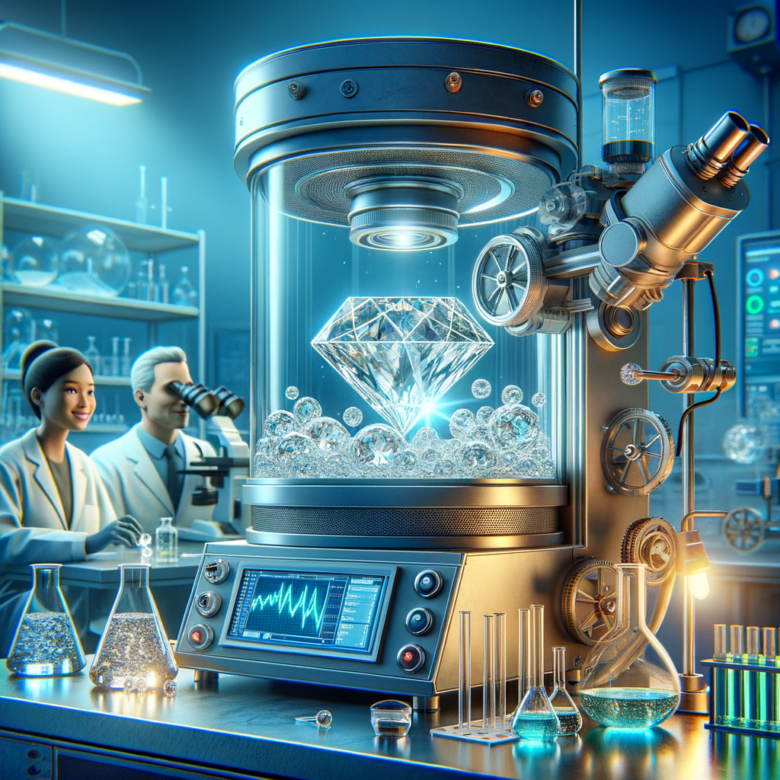Diamonds are revered for their beauty, rarity, and enduring value. While natural diamonds have been cherished for centuries, lab-grown diamonds have emerged as a viable alternative. Understanding their distinctions is crucial for consumers looking to make an informed decision.
What Are Lab-Grown Diamonds?
Lab-grown diamonds, also known as synthetic or man-made diamonds, are created in a controlled environment rather than being formed naturally deep within the Earth’s crust. They have the same physical, chemical, and optical properties as natural diamonds, making them visually indistinguishable.
How Are Lab-Grown Diamonds Created?
The process of producing lab-grown diamonds involves two methods: High Pressure High Temperature (HPHT) and Chemical Vapor Deposition (CVD). Both methods simulate the conditions under which natural diamonds are formed, resulting in crystals that can be cut and polished just like their natural counterparts.
Natural Diamonds: Formation and Mining
Natural diamonds are formed deep within the Earth over billions of years under extreme pressure and heat. They are then brought to the surface through volcanic eruptions or deep-sea volcanic activity. Mining natural diamonds can have significant environmental impacts.
Comparison of Environmental Impact
Lab grown diamonds are often touted as a more environmentally friendly choice. They require less energy and water to produce and do not involve the destruction of natural landscapes. In contrast, mining natural diamonds can lead to deforestation, soil erosion, and habitat disruption.
The Four Cs: A Comparison
When comparing lab-grown and natural diamonds, it’s essential to consider the Four Cs – Carat weight, Cut quality, Color grading, and Clarity. Both types of diamonds are graded using the same criteria, ensuring a fair comparison.
Carat Weight
Carat weight refers to the size of the diamond. Lab-grown diamonds can be produced in larger sizes at a lower cost compared to their natural counterparts.
Cut Quality
The cut of a diamond determines its brilliance and sparkle. Both lab-grown and natural diamonds can achieve excellent cut quality when crafted by skilled artisans.
Color Grading
Lab-grown diamonds typically exhibit fewer impurities, resulting in a higher likelihood of receiving a higher color grade. Natural diamonds may have a broader range of colors due to trace elements.
Clarity
Both lab-grown and natural diamonds can achieve high clarity grades. However, lab-grown diamonds may have fewer internal inclusions.
Price and Affordability
One significant advantage of lab-grown diamonds is their affordability. They often cost 20-40% less than natural diamonds of similar quality. This makes them an attractive option for budget-conscious consumers.
Ethical Considerations
Lab-grown diamonds are considered a more ethical choice by some consumers as they do not contribute to the social and environmental issues associated with diamond mining in certain regions. Natural diamonds may come from conflict zones.
Market Trends and Demand
The demand for lab-grown diamonds is on the rise, particularly among younger consumers who value sustainability and ethical sourcing. However, natural diamonds still hold their appeal among traditionalists.
Conclusion
In conclusion, the choice between lab-grown and natural diamonds depends on your priorities. Lab-grown diamonds offer affordability, reduced environmental impact, and ethical considerations. Natural diamonds, on the other hand, have a timeless allure and a long-standing history.
Ultimately, both options have their merits, and the decision should align with your values and preferences. Whichever you choose, you can be confident that both lab-grown and natural diamonds possess exceptional beauty and enduring value.
